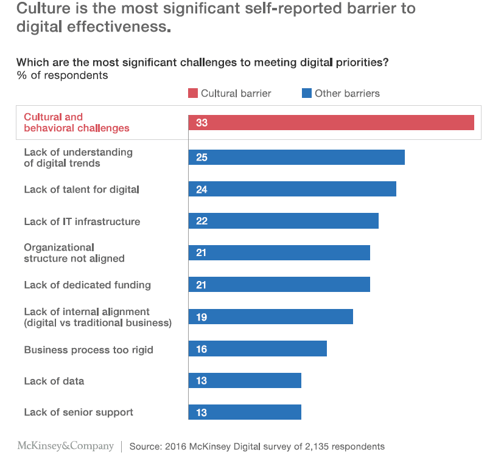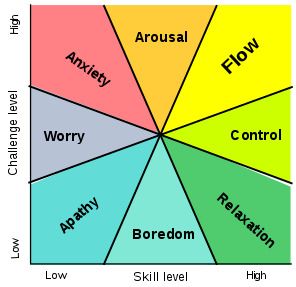Our Brains Struggle in the Modern World
Your brain is taxed in ways your ancestors never knew. Memories are unreliable, and we cannot multitask despite what we tell ourselves. Hungarian-American psychologist Mihaly Csikszentmihalyi says minds can handle 120 bits-per-second while a conversation with a person consumes 60-bits of information per second.
Add another person, and that’s it, you have no brain to spare. Imagine you are driving and focused on staying safe, this is why you will miss many things along the way. Your brain has correctly prioritized its precious energies (your brain uses up to 20% of your energy every day - it’s the #1 organ for energy usage). You now have the information you need to never pick up your smartphone again while driving.
Every day the average person produces six newspapers worth of information compared with just two and a half pages 24 years ago. Using the analogy of an 85-page newspaper, they found that in 1986 we received around 40 newspapers full of information every day, but this had rocketed to 174 in 2007. - USC, Dr. Martin Hilbert
That’s almost 5X the information that the average American consumes. It’s almost as if we need to defend ourselves with enhanced filtering to be more human - but we’ll get to that later.
Keep in mind that these numbers are from 2007. That was 11 years ago. Try this from 2011;
Each of us has the equivalent of over half a million books stored on our computers, not to mention all the information stored in our cell phones or the magnetic stripe on the back of our credit cards. We’ve created a world with 300 exabytes (300,000,000,000,000,000,000 pieces) of human-made information. - Fast Company, Daniel Leviton
As Leviton correctly points out in his book, “The Organized Mind”, the information age has shifted a great deal of our work that was done by information specialists to the rest of us. We hopefully take the next step and off-load our memory requirements to notepads, computers, and software. The reason I say hopefully is due to the way our brain works and the growing avalanche of data, writing something down might be our best hope.
More from The Organized Mind; In 1976, the average supermarket stocked 9,000 unique products; today that number has ballooned to 40,000 of them, yet the average person gets 80%–85% of their needs met in only 150 different supermarket items. This new shopping paradigm is addressed as the complexity of choice or the paradox of choice.
I get 100% of my needs addressed with less than 50 products, and that’s if I count protein bars. When I go into any store, I’m a shopping commando. I get in, and I get out and rarely do I surprise myself. I know there are shopping experiences that I am missing, but store selection fails to simplify my life.
Even your computer can be a confusing mess. You have files you’ve long forgotten buried in folders that have lost relevance to your day. Searching through your computer for the information you’ve used sparingly, whose importance has re-emerged can be an ugly Easter egg hunt.
So why do we lose important physical things such as keys and wallets? As Leviton says, “We are all faced with an unprecedented amount of information to remember, and small objects to keep track of.”
Years ago when I would misplace my keys or my wallet, I would offer myself this excuse, “it’s because I’m thinking about important things.” Note: humans can rationalize almost any behavior.
As if anything is more important than the keys that allow me to open doors, use my chief mode of transportation, and identify myself. The long-term solution was to develop better habits about always putting them in the same place.
The truth is I have a brain that through millions of years of evolution has blind spots and other than off-loading my memory needs, constantly prioritizing, and trying to establish good habits; I am challenged to stay on track. The stress to stay on top of the information for my brain is no different from the average person.
It’s Time to Upgrade the Company’s Brain and It’s Challenging
Like our brains, businesses are struggling to keep up in today’s world of the new normal. Let’s say you were driving your shiny Corvette on a beautiful sunny day and you cross a state line. After crossing the border, the weather is wintry, the roads are in disrepair, and there are steep hills.
Your Corvette will struggle to perform in this new land, but you must get to your destination. The Corvette excels during a sunny day on a flat road, but this new environment is a problem. Now, you are desperately trying to avoid getting stuck or spinning out. You must keep moving at a good pace, and your “car” is not built to be on this track. Your company is no different than the Corvette that used to be high-performing.
Many companies aren’t tracking to the digital world, and they must evolve quickly to thrive. This lack of transformation means productivity isn’t optimized, profits shrink, and systems users cannot exercise self-service. Your mission (if you choose to accept it), is to adapt to this new environment, build a car that fits, and remove the friction.
Our current inefficiencies are happening daily, and they contribute to corporate complexity. Maybe if the rest of the world had stayed still, our limited corporate brains would be okay, but the future waits for no one.
Companies often absorb these issues over time and come up with clever ways to hide them such as shadow IT, but not everything that is holding you back can be seen. Adding some color to this story is this from Altimeter Research:
Key insights from the 2017 State of Digital Transformation report include:
- While businesses cite “evolving customer behaviors and preferences” as the top driver of digital transformation, fewer than half invest in understanding digital customers.
- Some executives are beginning to own digital transformation efforts, and the Chief Information Officer (CIO) is most often at the helm (28%). As all companies increasingly become “technology companies,” the roles of the CIO and IT department are more important than ever — but real success in digital transformation is an enterprise-wide, cross-functional endeavor.
- Companies and their change agents still face significant challenges in the pursuit of digital transformation, including a lack of digital talent and expertise (31.4%), the perception that digital transformation is a cost center and not an investment (31%), and general culture issues (31%).
- While companies are making attempts to modernize employees’ skill sets for a digital economy with new training programs (62%), only about half are investing in new digital talent. The employee experience is a crucial, yet often overlooked element of a successful digital transformation.
Would you like to know what goals are driving digital transformation? Here are the top two reasons (productivity and critical to business success) from IDC’s Designing Tomorrow survey from December 2017 of over 1,000 companies by industry and regions:

Not a surprise to you I’m sure. However, we cannot dismiss the idea of what happens if transformation does not occur.
Here are the rest of the numbers:

However, change itself is challenging companies. Look at this 2018 graph from Bain and Company, with only 12% of companies accomplishing their goals. Bain’s survey showed that the achievement numbers haven’t improved in the last five years:

Transformation can certainly stall. Have you lived in the chart below? Addressing change, Bain shows us the Valley of Death:

“Then comes the valley of death. Nine to 18 months into the program, energy evaporates. People who were initially excited about participating in the transformation grow tired of the extra work and impatient with the lack of visible results. Enthusiasm gives way to cynicism. When change programs enter the valley of death, most of them never fully recover: Most either fail outright or deliver only mediocre results” - Bain, Reenergize Change Programs to Escape the "Valley of Death", July 2017.
This Valley of Death is the very reason one needs to prioritize organizational change management (OCM) for anything that is meant to deliver a meaningful impact to the business and affects different groups. Persistent executive and consistent behavior from your critical teams and partners over a few years are critical to success. Organizational change is not for the easily distracted.
What are the barriers to change? Companies will struggle to get everyone on board and moving toward a shared vision. Here are the top two barriers (existing business model and culture) by industry and region according to the survey mentioned above from IDC:

These are big hurdles and require organizational change excellence to address. It’s being done by companies who want to lead in their markets.
Here are the rest of the barriers to digital transformation:

Combine IDC’s findings with the next chart from McKinsey’s Culture for a Digital Age (July 2017) based on 2,135 respondents.

Looking at the last two charts, you can see where you must focus your change management energies:
- Culture
- Current Business Model and Design
- Digital Talent
Culture
Culture is reinforced at the individual, team, and company levels. Behavior can change if the proper incentives are there (think carrots, not sticks) to change. Moreover, those incentives should strive to be in alignment with the business model and design that a company wishes to strengthen.
Without a vibrant and adaptable culture, the business model cannot thrive.
Current Business Model and Design
Now we can see why executive support is critical. Who besides the C-Suite has the agency to design, insist on, and bet on new business models? Who can redirect budgets from current cash-cow businesses and feed the emerging digital areas?
One of the reasons Shakespeare said, “Uneasy lies the head that wears the crown” is that there are times, leaders end up choosing the best pain for their company, and that’s not fun.
Resource reallocations for operations can be very tricky and dare I say it - political. The company must ensure its new value chain has no disabling links (perfection is not possible or necessary) and at the same time move with velocity.
Digital Talent
Digital talent is where many companies are failing or hurting themselves. Some will not be able to evaluate digital talent thoroughly while others will underestimate the economics of high demand and a dwindling supply of great talent. I trust you know by now mediocrity is easy to find.
In other words, these companies often operate from a place of being uninformed, slow, and cheap. A company pays now or pays later (and panics) at a much higher cost. Leveraging great talent that knows how to communicate, the company can have a positive impact on business design and culture.
Moreover, some will want to build digital prowess internally when there is not enough time to achieve the required level of expertise. It would be far better to bring in an outside experienced professional services team with developers who can get the project lifted up with minimal interruptions. From there, your collective team can define, fund, and plan out Phase II and Phase III.
Team Flow is How We Win and It’s a Mind Game
How about achieving this state every day when you’re at work?
Flow is a mental state of operation where a person is fully immersed in a feeling of energized focus, full involvement, and enjoying in the process of the activity. When you are in a state of flow (or being in the zone), you often lose a sense of space and time.
I have experienced flow many times. It’s not rare to look up from the state of flow and realize hours have passed when it felt like an hour. The other result of flow is I usually have created something that brings new value to a concept or direction. Said differently, flow allows us to get into a creative state that opens new doors of opportunity. Your mind gets lost to a superior state of purpose, challenge, and creativity.
Genius is more likely to visit you in a state of flow.
I read the book, “Flow” from Mihaly Csikszentmihalyi over 20 years ago and while I cannot promise you it’s a breezy read, it does point to something we have all experienced; the combination of doing something challenging and incredibly rewarding at the same time.
Consider a company getting more flow from its employees. I think the best companies are achieving Corporate Flow and as a result, attract more high-performers. Because flow is where any thinking person that cares wants to be.
In the next chart, you can see Czikszentmihalyi’s Flow Model where it points out the mental state regarding challenge and skill level.

“Surgeons say that during a difficult operation they have the sensation that the entire operating team is a single organism, moved by the same purpose; they describe it as a ‘ballet’ in which the individual is subordinated to the group performance and all involved share in a feeling of harmony and power.” - Mihaly Czikszentmihalyi
What happens with the current systems we work with are keeping us out of our best productivity zones? When we have bad systems, we don’t have the time to sink into a flow. We’re too busy keeping our head above water servicing legacy solutions.
Look at the opposite of flow; apathy.
No legacy system can justify the suffering of its users.
So the next time someone asks you about the value of ServiceNow, remember this; the goal is not technology. It’s about using an elegant software platform that is designed to improve work lives, one's mental state, and the entire company's ability to be more human.
Author: John Ryan | Crossfuze, CMO
Related Blog Posts
ServiceNow | 2 minute read
Getting Started with ServiceNow: Part 2
Choosing the Right ServiceNow Partner Implementing an enterprise-wide platform like ServiceNow is complex. Projects involve multiple stakeholders and...
2 minute read
ServiceNow® Gold Partner Crossfuze Expands Fixed-Price, Accelerated Implementation Offerings
ServiceNow’s Project Portfolio Management (PPM) and Software Asset Management (SAM) can be implemented in just four to six weeks via Crossfuze’s...
ServiceNow | 3 minute read
ServiceNow SPM is the New ITBM: New Features that Come with the Name Change
As a leading technology company, ServiceNow continuously adapts to reflect best practices across industries—in both practical and innovative ways....
Subscribe to
Our Blog
Sign up for our newsletter and get insight and information to make your ServiceNow vision a reality with speed, agility, and confidence.




